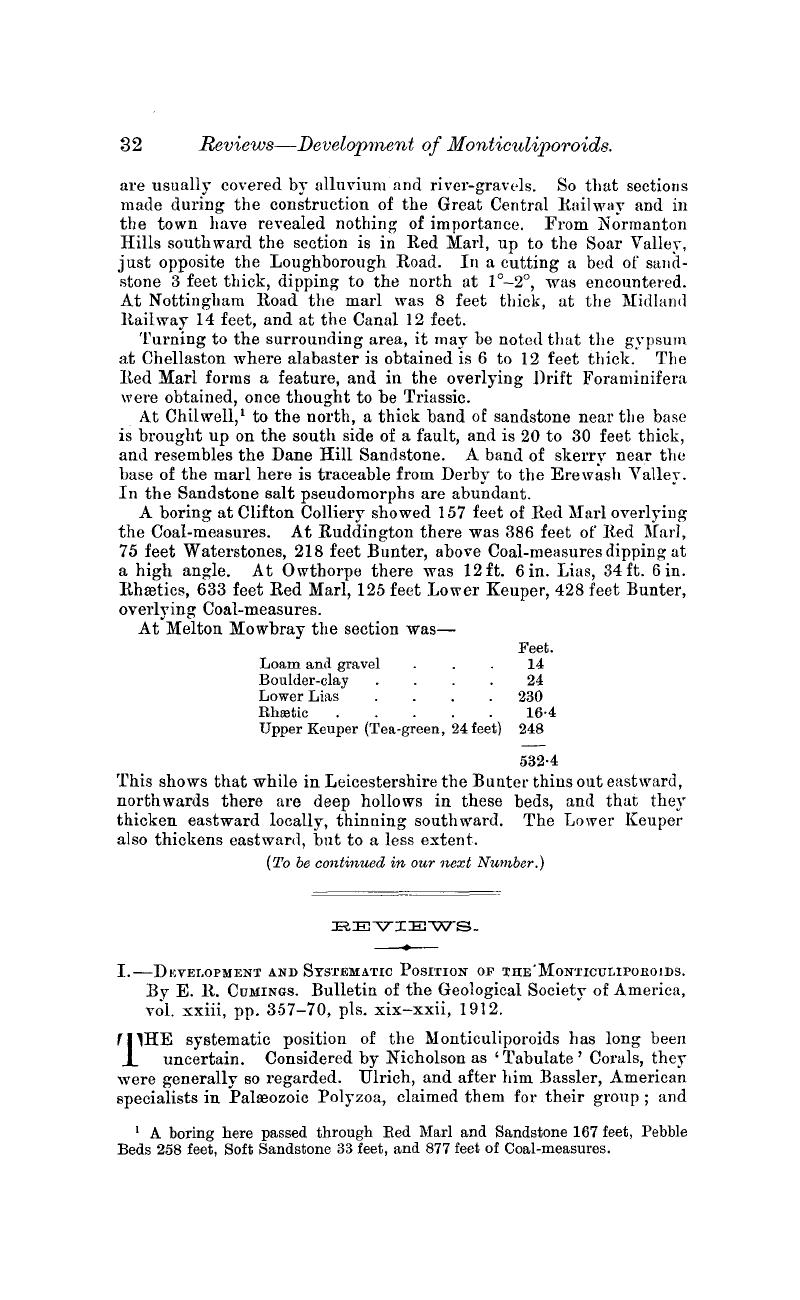No CrossRef data available.
Article contents
I.—Development and Systematic Position of the Monticuliporoids. By E. R. Cumings. Bulletin of the Geological Society of America, vol. xxiii, pp. 357–70, pls. xix–xxii, 1912.
Published online by Cambridge University Press: 01 May 2009
Abstract

- Type
- Reviews
- Information
- Copyright
- Copyright © Cambridge University Press 1913
References
page 33 note 1 Nature, vol. lxxxix, p. 502, 1912.Google Scholar
page 33 note 2 Nicholson, , On the Structure and Affinities of the genus Monticulipora and its sub-genera, 1881, p. 1.Google Scholar
page 33 note 3 D'Orbigny, , Prodrome de Paléontologie stratigraphique universelle, vol. i, p. 25, 1850.Google Scholar
page 34 note 1 Barrois, , Recherches sur l'embryologie des Bryozoaires, 1877, pp. 70–85, pls. iii and iv.Google Scholar
page 34 note 2 Harmer, , “On the Development of Tubulipora”: Quart. Journ. Micros. Sci., vol. xli, pp. 73–157, 1898.Google Scholar
page 34 note 3 Lang, “The Jurassic forms of the ‘genera’ Stomatopora and Proboscina”: Geol. Mag., Dec. V, Vol. I, pp. 315–22, 1904.Google Scholar
page 34 note 4 Cumings, “Development of some Palæozoic Bryozoa”: Amer. Journ. Sci., ser. IV, vol. xvii, p.50, 1904.Google Scholar
page 34 note 5 Jullien, , Mission Seientifique du Cap Horn, 1882–3, tom. vi, Zoologie—Bryozogires, p. 29, 1888.Google Scholar
page 34 note 6 Cumings, op. cit., pp. 58–74, 1904.Google Scholar
page 34 note 7 Cumings, “Development of Fenestella”: Amer. Journ. Sci., ser. IV, vol. xx, p.170, 1905.Google Scholar
page 35 note 1 What are here considered as the post-Palæozoic Trepostomes are the Heteroporidæ, Cerioporidæ, and their allies.
page 35 nete 2 Cumings, loc. cit., 1905.Google Scholar
page 35 note 3 Cumings, op. cit., p. 76, 1904.Google Scholar
page 35 note 4 Lamouroux, , Exposition Méthodique des genres de I'ordre Polypiers, 1821, p. 113.Google Scholar The three specimens mentioned in the British Museum Catalogue of Jurassic Bryozoa, 1896, as coming from the Norman Calcaire à Polypiers are not free from doubt; one certainly and another probably are from the Cretaceous of Maastricht.


